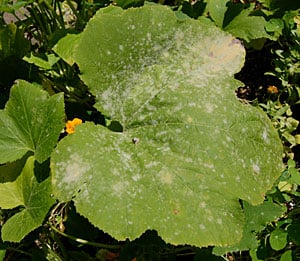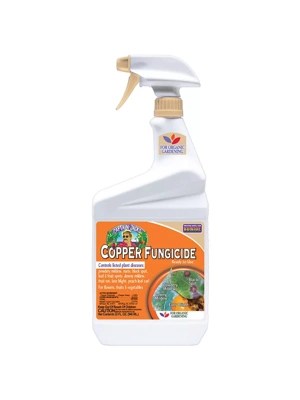Powdery Mildew

Powdery mildew. Photo: Ann Whitman
A powdery white growth on leaves is the first evidence of this fungal disease, which affects beans, cucumbers, squash, pumpkins, lettuce, peas and many other kinds of plants. The fungus can spread to flowers and fruit. New growth and succulent plant tissues are particularly vulnerable to infection. Infected areas eventually turn yellow and dry up; severe infection can weaken or even kill entire plants.
Unlike other fungal diseases, powdery mildew does not require wet foliage for infection to occur, although it does require high humidity. It can spread quickly in warm, dry climates. The fungus overwinters on plant debris.
Prevention and Control
- Plant powdery mildew-resistant varieties, such as Super Sugar Snap pea.
- Water plants as needed to prevent moisture stress.
- Keep plants well spaced and weeded to optimize air flow around the leaves.
- Avoid excess nitrogen fertilizer, especially late in the growing season.
Last updated: 01/05/2023
Print this Article:
Related items
Related Articles
Get the Dirt
Stay up to date on new articles and advice. Please fill out the information below.








